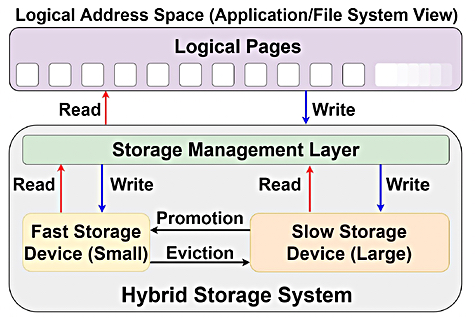Computer science Professor Onur Mutlu has won a Huawei OlympusMons award for far-reaching research on data placement tech and NAND chips.

The OlympusMons awards started in 2019 to recognize and encourage foundational data storage research and nurture collaboration between industry, academia, and research. A 2023 accolade presented to the team led by Professor Onur Mutlu of ETH Zurich was for their study into network-storage-computing converged systems, which included an adaptive optimization algorithm. Mutlu’s team was awarded ¥1 million ($137,883). A 2023 document, “Machine Learning Driven Memory and Storage Systems,” shows it involving three elements:
- Pythia – self-optimizing memory controller using reinforcement learning
- Hermes – learning-based off-chip load predictors to accelerate long-latency load requests
- Sibyl – self-optimizing hybrid storage system (HSS) controllers using reinforcement learning
The reinforcement learning idea behind Sibyl is that a data placement controller, operating at a storage array controller level or in an OS, could receive positive and negative notification of data placement decisions across two or three tiers of storage, based on minimizing access latency. It could then optimize its placement decisions to reduce latency overall, learning to improve its performance over time.
Sibyl is explained in a May 2022 scientific paper, “Sibyl: Adaptive and Extensible Data Placement in Hybrid Storage Systems Using Online Reinforcement Learning.” The abstract says: “Sibyl observes different features of the running workload as well as the storage devices to make system-aware data placement decisions. For every decision it makes, Sibyl receives a reward from the system that it uses to evaluate the long-term performance impact of its decision and continuously optimizes its data placement policy online.”

The decisions take account of the system costs involved in promoting/evicting data from any one storage tier to another.
Mutlu’s team evaluated Sibyl against CDE, HPS, archivist, and RNN-based data placement technologies. It improves performance by 21.6 percent compared to the best previous data placement technique in dual-HSS configuration, the paper states. Sibyl outperforms the state-of-the-art policy by 48.2 percent in a tri-HSS configuration: Optane P4800X SSD, Intel D3-S4510 SATA SSD, Seagate Barracuda 1 TB SATA disk drive.
It achieves 80 percent of the performance of an idealized data placement policy with complete knowledge of future access patterns, while incurring a modest storage overhead of only 124.4 KiB.
The paper’s conclusion reads: “Our extensive real-system evaluation demonstrates that Sibyl provides adaptivity and extensibility by continuously learning from and autonomously adapting to the workload characteristics, storage configuration and device characteristics, and system-level feedback to maximize the overall long-term performance of a hybrid storage system.”
Sibyl can be extended to new device tiers and could even, in theory, be applied across storage arrays in a tiered hierarchical lifecycle management system, although this has not been coded and tested.
Open source Sibyl code is available in GitHub, as is open source code for Hermes and Pythia.








